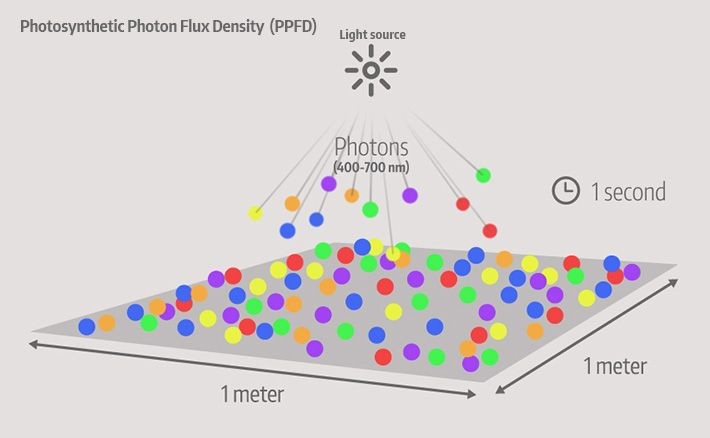Do Crops Grow Better with More Light
In the world of agriculture, the quest for optimal crop growth and higher yields is a constant pursuit. Light stands out as a fundamental element that fuels photosynthesis, the vital process by which plants convert light energy into chemical energy to support their growth and development. Growers and researchers alike are continuously exploring the role and the impact of light on crop growth to enhance agricultural productivity.
But do crops truly grow better with more light?
Generally speaking, the answer is ‘Yes’.
In this blog, we will explore the relationship between light and crop development and the potential benefits of providing plants with supplemental lighting.
The role of light in crop growth
Light is absolutely essential for plant growth. Through the process of photosynthesis, plants use light energy to power the production of food and oxygen from carbon dioxide and water. Chlorophyll and other pigments capture photons and convert that light energy into chemical energy that plants can use. Without sufficient light exposure, plants cannot perform photosynthesis and will fail to thrive. In addition to fueling photosynthesis, light influences various factors crucial for crop growth, including photosynthetic, leaf expansion, and flowering.
Research shows that optimizing light exposure and spectra for each crop can substantially improve productivity, growth rates, and crop quality. One study found tomato yields increased 65% under supplemental lighting versus sunlight alone. LED grow lights tuned to specific recipes for leafy greens increased vitamin C content by 147%. Such findings demonstrate the power of filling gaps in sunlight exposure and providing targeted spectra.
Understanding light intensity
Light intensity refers to the amount of light delivered to the plant canopy over a given period of time. For plants, this is measured using metrics like photosynthetic photon flux density (PPFD) or daily light integral (DLI).
PPFD measures the number of photons in the photosynthetically active radiation (PAR) range plants use. This is expressed as micromoles per square meter per second (μmol/m2/s). DLI totals the amount of PAR over a day as mole of light per square meter (mol/m2).
Numerous studies have demonstrated a strong correlation between light intensity and crop yield. Higher light intensities generally lead to increased photosynthetic activity, resulting in enhanced growth and higher yields.
However, it is important to note that different crops have varying light intensity requirements. Getting the right intensity comes down to positioning, dimming, and selecting the grow lights properly. Factors like the power output, the height of lights over the canopy, and the overlap between units all impact how much light reaches plants, resulting in different light intensity.

Exploring light duration and photoperiodism
Photoperiodism refers to the physiological response of plants to the duration of light and darkness. Different plants have different photoperiodism requirements to trigger key transitions. Long-day plants only flower when the light period exceeds a critical duration. Short-day plants flower when the dark period is longer than a threshold. Day-neutral plants rely on other cues like age.
By managing light duration through techniques such as supplemental lighting and light deprivation, growers can control photoperiods and enhance crop growth. For example, providing night-interruption lighting for 6 hours can ensure short-day crops receive more than 12 hours of darkness needed to bloom. By promoting flowering and fruiting, growers can achieve an earlier harvest and reach the market sooner. Photoperiod adjustment also enables season extension and year-round harvesting.

The importance of the light spectrum
The light spectrum, consisting of different wavelengths, plays a crucial role in plant growth. Chlorophyll and other photosynthetic pigments in plants selectively absorb certain wavelengths of light, driving photosynthesis. Natural sunlight contains a broad spectrum, but plants have evolved to use certain wavelengths more effectively for key functions.
Studies show blue and red wavelengths are most critical for photosynthesis and biomass production. The peak absorption ranges are 450-500nm for blue and 640-680nm for red. However, far-red light (700-800nm) regulated germination, flowering, and other plant processes. Additional band signal changes in nutrition, morphology, taste, and more.
Tailoring the light spectrum to suit specific crop requirements can result in improved yields and higher-quality production. With LED grow lights, the recipe of wavelengths can be tailored to a crop’s specific needs at each growth stage.

Maximizing crop yields with horticulture lighting
In conclusion, the correlation between light and crop growth is undeniable. Crops indeed grow better with increased light, as it fuels the photosynthetic process and influences various aspects of plant development. Light intensity, duration, and spectrum play a vital role in optimizing crop yields. By carefully considering these factors, growers can create an optimal lighting environment that promotes photosynthesis, uniform growth, and timely progression of growth stages. As a result, horticulture lighting enables growers to achieve higher productivity and meet the increasing demand for sustainable and efficient agricultural practices.
As a horticulture lighting manufacturer, we offer various lighting options suitable for crop cultivation, such as full spectrum LED grow lights, variable spectrum LED grow lights, supplemental UV lights, etc. Whether you need a lighting solution for indoor farms, greenhouses, or grow tents, we can provide the best option for you. We also provide free lighting design to achieve maximum efficiency and minimum costs. By strategically positioning light sources and ensuring a balanced distribution of light, you can maximize crop yields.
Want to improve crop yields?
Don’t hesitate to contact us.

